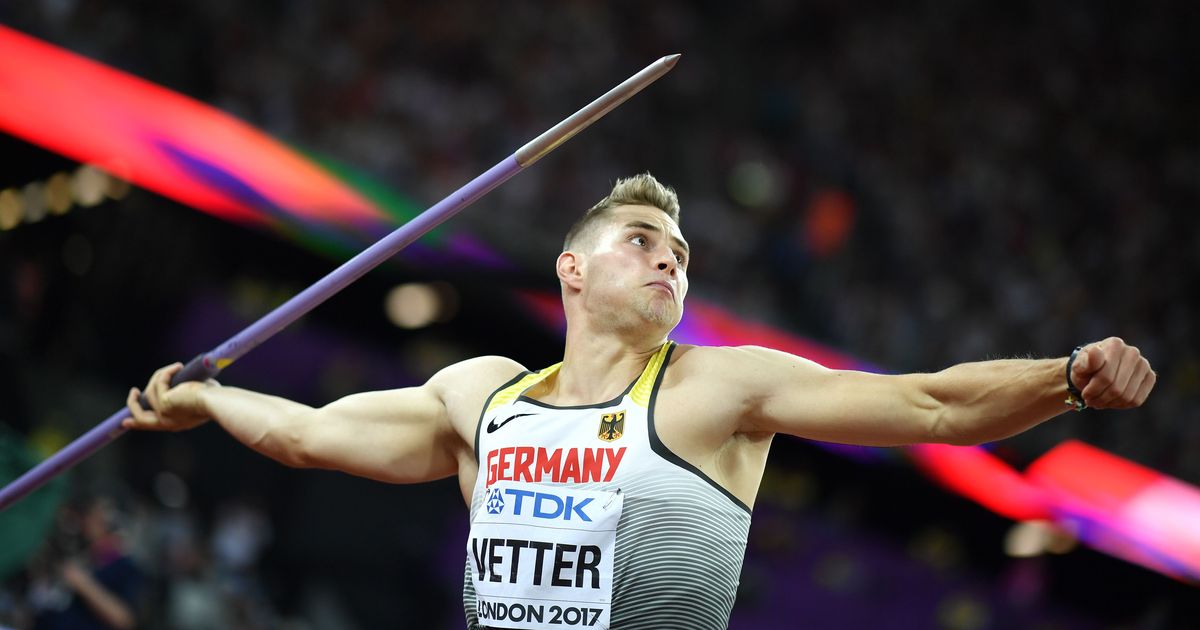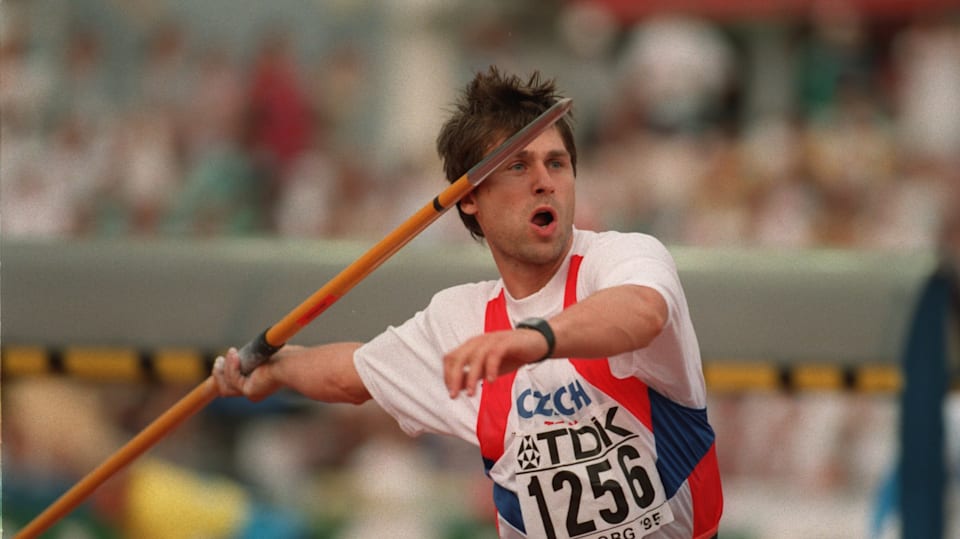History of the World Record Javelin Throw

The javelin throw, a test of strength, power, and precision, has witnessed a captivating evolution of records, pushing the boundaries of human athleticism. This journey, spanning over a century, is marked by the achievements of remarkable athletes and the constant refinement of the javelin itself.
Timeline of World Records
The world record in javelin throw has been broken numerous times, reflecting the continuous progress made by athletes. Here is a timeline highlighting key milestones and the athletes who made history:
- 1912: The first official world record was set by Eric Lemming of Sweden, who threw the javelin 62.32 meters at the Stockholm Olympics. This record stood for over a decade.
- 1921: Jonni Myyrä of Finland, known for his exceptional throwing technique, surpassed Lemming’s record with a throw of 66.10 meters.
- 1930s: The 1930s witnessed a significant increase in the world record, with Finnish athletes dominating the sport. Matti Järvinen, also from Finland, set a new record of 71.70 meters in 1932, which stood for almost a decade.
- 1940s: The record was again broken by a Finnish athlete, Yrjö Nikkanen, who achieved a throw of 74.08 meters in 1948.
- 1950s: The world record saw a dramatic increase during the 1950s, with the introduction of the modern javelin design. This new javelin, with its more aerodynamic shape, allowed for greater throwing distances. The record was broken multiple times during this period, culminating in the 1959 record of 83.98 meters set by Egil Danielsen of Norway.
- 1960s-1980s: The 1960s and 1970s saw the dominance of Finnish and East German athletes. The record was broken several times during this period, reaching 94.58 meters in 1984, set by Uwe Hohn of East Germany.
- 1990s-Present: The current world record for men is held by Jan Železný of the Czech Republic, who achieved a remarkable throw of 98.48 meters in 1996. The record for women is held by Barbora Špotáková of the Czech Republic, who threw 72.28 meters in 2008. This record remains unbroken today.
Evolution of Javelin Design, World record javelin throw
The design of the javelin has significantly impacted throwing distances throughout history. The early javelins were heavier and less aerodynamic, limiting throwing distances. The introduction of the modern javelin in the 1950s revolutionized the sport.
- Early Javelins: The early javelins were made of wood and were often quite heavy. Their design was less aerodynamic, resulting in shorter throws. These javelins were also more prone to breaking during the throw.
- Modern Javelin: The modern javelin, introduced in the 1950s, is made of metal and has a more aerodynamic shape. The center of gravity is shifted forward, allowing for greater stability and distance. This design has significantly increased throwing distances and has been a key factor in the evolution of world records.
Comparison of Men’s and Women’s World Records
While the men’s world record in javelin throw has consistently been higher than the women’s record, the gap has been narrowing over time. This is attributed to the increasing athleticism of female athletes and the development of techniques that allow them to throw further.
- Men’s Technique: Men’s javelin throwing technique typically involves a more powerful run-up and a higher release point, allowing for greater velocity and distance.
- Women’s Technique: Women’s javelin throwing technique has evolved to emphasize speed, agility, and precision. While their run-up may be shorter, their throwing motion is often characterized by a more fluid and controlled release, maximizing accuracy and distance.
The Physics of Javelin Throwing: World Record Javelin Throw
The art of javelin throwing is a captivating blend of athleticism and physics. To understand the intricacies of this sport, it is essential to delve into the forces at play, the biomechanics of the throw, and the crucial technical elements that determine the javelin’s flight path and distance.
Forces Involved in a Javelin Throw
The flight of a javelin is governed by a complex interplay of forces. The primary forces influencing the javelin’s trajectory are gravity, air resistance, and the athlete’s momentum.
- Gravity: This force constantly pulls the javelin downwards, affecting its vertical motion and ultimately determining the time it spends in the air. The longer the javelin stays in the air, the further it can travel horizontally.
- Air Resistance: As the javelin moves through the air, it encounters resistance, which slows its forward motion. The amount of air resistance depends on the javelin’s shape, speed, and angle of attack. The aerodynamic design of the javelin is crucial to minimize air resistance and maximize its flight distance.
- Athlete’s Momentum: The athlete’s momentum, a product of their mass and velocity, is transferred to the javelin during the throw. A powerful and efficient transfer of momentum is essential to impart significant initial velocity to the javelin, setting it on its path for a long throw.
Biomechanics of a Successful Javelin Throw
The biomechanics of a successful javelin throw involve a coordinated sequence of movements, focusing on posture, arm motion, and release point.
- Posture: The athlete’s posture is crucial for generating power and maintaining balance. A strong and stable stance, with the feet positioned at a specific angle, allows the athlete to generate force efficiently. The athlete’s body acts as a lever, using the legs and torso to transfer power to the arm and ultimately to the javelin.
- Arm Motion: The arm motion is a complex series of movements that involve the shoulder, elbow, and wrist. The athlete’s arm acts as a whip, generating speed and power as it swings through a wide arc. The javelin is held in a specific grip, allowing for precise control and release. The athlete’s arm motion should be smooth and coordinated, ensuring the javelin is released at the optimal angle for maximum distance.
- Release Point: The release point is the moment the javelin leaves the athlete’s hand. The angle of release is crucial for determining the javelin’s trajectory. The athlete aims to release the javelin at a specific angle, typically around 45 degrees, to maximize the horizontal distance. A precise release point, combined with the athlete’s momentum and the javelin’s aerodynamic design, contributes to a long throw.
Technical Elements and Their Impact on Distance
The technical elements of a javelin throw have a direct impact on the distance achieved. The following table Artikels some of the key elements and their significance:
| Technical Element | Impact on Distance |
|---|---|
| Run-up | A powerful and efficient run-up allows the athlete to build momentum, transferring energy to the javelin. A longer run-up can result in greater velocity and distance. |
| Javelin Grip | A firm and secure grip ensures control and accuracy. The athlete’s grip should allow for a smooth release at the optimal angle. |
| Release Angle | The angle at which the javelin is released significantly impacts its trajectory. An angle close to 45 degrees typically maximizes horizontal distance. |
| Javelin Speed | The javelin’s initial velocity at release is directly proportional to the distance it travels. Greater speed results in a longer throw. |
| Javelin Rotation | A slight rotation of the javelin during release can improve its stability and reduce air resistance, potentially increasing distance. |
The world record javelin throw stands as a testament to human athletic prowess, a mark that athletes strive to surpass. The 2024 Paris Olympics javelin throw final, a spectacle of strength and skill , will undoubtedly feature athletes aiming to rewrite the history books.
The pursuit of the world record is an enduring element of this event, pushing athletes to their limits and inspiring future generations to reach for greatness.
The world record javelin throw stands as a testament to the incredible athleticism and dedication of athletes like Jan Železný, who achieved the current record of 98.48 meters in 1996. This record has stood for over two decades, highlighting the difficulty of surpassing such a remarkable feat.
The javelin throw, however, is a constantly evolving sport, with advancements in technique and equipment influencing its trajectory. The innovative design and manufacturing processes employed by individuals like oliver helander , a pioneer in the field, have contributed significantly to these advancements, paving the way for future athletes to potentially break the world record.

